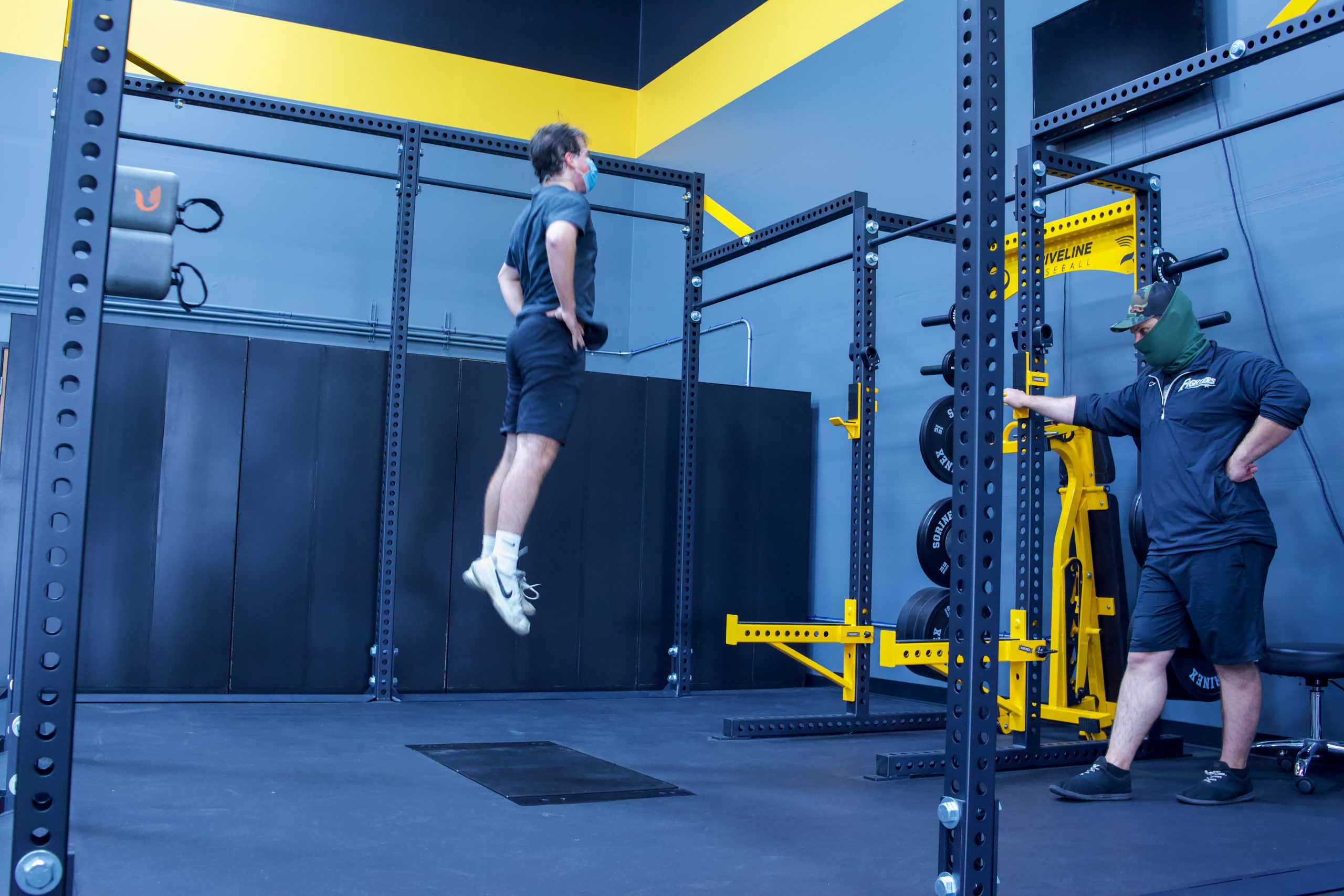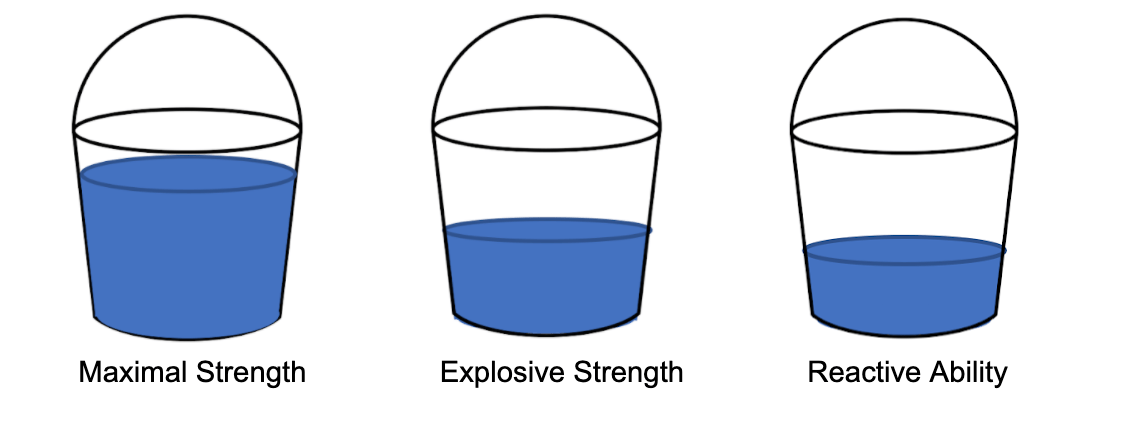High Performance Assessment: Strength Testing Using Force Plates

In a Driveline strength assessment, we test a range of general strength properties using a dual force plate system from ForceDecks.
In the coming days, we will release a series of articles that break down each of our assessments: How do we perform them? What information do we get from them? How does that inform programming?
This introductory article gives a brief overview of our assessment process, providing some context, and setting the stage for the upcoming articles. Our current testing protocol consists of:
- The Isometric Mid-Thigh Pull (IMTP): A test of lower body Maximal Strength, showing how much force the athlete can exert.
- The Countermovement Jump (CMJ): Assessing lower body Explosive Strength using a countermovement to generate a powerful effort in a short amount of time.
- The Squat Jump (SJ): Assessing lower body Explosive Strength from a static position to generate a powerful effort in a short amount of time.
- The Repeated Hop Test: A test of lower body Reactive Ability, the ability to quickly transition from eccentric to concentric in a dynamic effort.
It is important to note that while preliminary analysis has shown a moderate positive correlation of several of our assessment metrics to skill outcomes like pitching velocity and exit velocity, when we look at these properties, there is no perfect recipe or formula that we are testing for.
When we look at assessment data, it is with the understanding that beyond the general physical properties we are testing, there are other factors always in play, including individual tissue properties, muscle insertion points, mechanical efficiency, and numerous other qualities that are often athlete-specific.
We typically approach strength training with the metaphor of filling buckets, and the results from an athlete’s assessment show us where to add water:

This athlete would show excellent maximal strength in the IMTP, with average explosive strength and poor reactive ability in the jumps. Their training program would generally focus on explosive work and plyometrics with a maintenance level of heavy lifting, all intended to fill their explosive strength and reactive ability buckets while keeping their maximal strength bucket as full as possible.
Assessment Frequency
We assess each athlete during their first week in the gym and then retest once every 6 weeks. Six-week blocks allow us to track athlete progress to advance programming without using so much training economy that we significantly interfere with their throwing or lifting programs.
Testing is different than monitoring in that testing is performed periodically (eg. every 6 weeks), whereas monitoring is done on an ongoing basis or with very short intervals (eg. at the start of every lift). Both have their benefits and their drawbacks. Testing tends to take significantly longer but the depth of information is often much greater. Monitoring provides less information but because it is done more frequently, you can identify trends and potentially make programming adjustments on a much shorter timeline.
Currently, we monitor athlete response to training using subjective wellness questionnaires, which are given to athletes on a daily basis. Eventually, we may look to add objective measures that allow us to monitor athlete response to training, however, those tend to be more challenging to implement from a logistical standpoint. Inevitably, we will end up with a protocol that consists of both testing and monitoring – testing to get a deep understanding of the athlete, and monitoring to give us useful information that can be used to make adjustments in a tighter time frame.
Alternative Assessment Methods
We chose force plate assessments over alternative methods such as 1RM/3RM/etc. testing because with our in-gym population, it gives us the most bang for our buck. The IMTP is significantly correlated with heavy lower body compound lifts such as a back squat 1RM and shows lower injury risk than 1RM testing. Safety is especially important in our assessment, given the range of ages and training experience within our trainee population. Because an athlete’s initial assessment is likely the first time we have seen them move in the weight room, loading up a back squat or deadlift max is often not the safest move.
This is not to say that there is no value in these tests, as max tests absolutely provide useful information for a performance coach and have the additional benefit of highlighting an athlete’s technique for that particular lift. This is why it is especially important for us to have coaches on the floor during training hours to monitor and coach technique, but this is not a part of our assessment process.
Other Notes
Our assessment process and the specific metrics we look at are continually being evaluated and compared to other possibilities as we collect data and learn to apply it better. As our assessment evolves, we will update this blog series with significant changes or additional tests that may be added down the road.
By Dan Adams, Connor White, Connor Rooney, Daniel Comstock, High Performance
Comment section